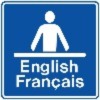How much of the good stuff do I need?
Quantifying the products
This page can help you calculate how much good stuff you need for your project.
Volume
To find how much you need, first calculate the surface area of your project (e.g. basket, bed, garden, lawn). To obtain this, multiply the length by the width. This will often be sufficient, for instance to determine how much amendment you need when top-dressing.
If you are filling a new volume, you will need to multiply your project's surface area by it's depth. Or simply put, multiply the length by the width by the depth.
When amending by volume to incorporate in depth, you will need to multiply your project's volume by the recommended proportion. For instance biochar amendment is typically recommended at 5-10% v/v. In other words, multiply the length by the width by the depth by the proportion.
Remember to keep all measurements in the same unit. For instance if your bed is only 6 inches, use 0.5 feet! Helpful tips: there are 27 cubic feet in a cubic yard, and 1000 litres in a cubic meter. And 1 cubic yard = 0.76 cubic meter.
Click on the links below for tools that can help you to:
-
calculate the volume of simple shapes (e.g. square, rectangular)
-
calculate the volume of more complex shapes (e.g. triangle, circle)
-
determine the surface area of irregular shapes (e.g. backyard).
Depth, and how to limit required volume
All plants don't have the same depth requirements. For instance, radishes or lettuce can do with 4-6 inches, but tomatoes would require much more. For new beds, a good practice to limit the volume of good soil you need to purchase can be to provide just enough depth and fill the bottom with a cheaper landscaping blend (e.g. sand-compost mix), or even inert material such as rocks or perhaps styrofoam. Some people also like to use rotting/semi-composted wood (small logs, branches, twigs) on the principles of ''hügelkultur'', but opinions vary as to how much these can trap nitrogen and attract undesirables (e.g. ants, followed by aphids). Click on the link below for a great resource and chart to
-
evaluate optimum depth for a variety of plants (vegetables, herbs, berries, and others).
Example
As an example, if the surface area of you project is 18 feet by 18 feet and you want to apply 1 inch thick, you will need exactly 1 cubic yard (27 cubic feet).
In the same way, one bag of 20 L would be sufficient to cover an area of 3 feet by 3 feet with a little less than 1 inch thick.

